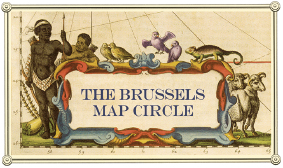Ontario University Libraries Collaborate to Release Over 1000 Historical Maps Online
The project is a province-wide collaboration, led by the OCUL Geo Community, an open forum for the exchange of information relating to maps and GIS, to digitize and geocode early topographic maps of Ontario at the 1:25000 and 1:63360 scales. The maps were originally produced by the Department of National Defence (until 1923: the Department of Militia and Defence) and show a variety of both natural and man-made features covering towns, cities and their surrounding areas in Ontario, over the period of 1906 to 1977. This project represents the single most comprehensive digitization project of the early-National Topographic Series map collection in Canada.
Early topographic maps are heavily used by historians and researchers interested in examining change over time. The project aims to improve access to the maps by making them available online and offering visual exploration through the project website and in the Scholars GeoPortal platform. There is benefit for Ontario’s students in having access to these resources. A project with the functionality of this one makes discovering the history of land use/development in Ontario far more accessible both for researchers and as a learning tool for students, says Ted Wilush, McMaster University Bachelor of Commerce graduate, and map enthusiast.
Researchers and students can explore the maps and compare changes over time using the GeoPortal's map viewer that contains current base map data and a transparency slider feature. The ability to use layers to compare the same (map) sheet from multiple eras against both each other and a modern map/satellite image is invaluable, Ted states.
Ontario's university libraries have been working together through OCUL on initiatives such as this since 1967. Preserving and expanding access to the broad research collections held by Ontario's university libraries is at the core of OCUL's collaboration, explains Vivian Lewis, OCUL Chair and University Librarian at McMaster University. It is exciting to have this collection digitized and openly available to the public. The OCUL Geo Community (previously named the OCUL Map Group) formed in 1973 to communicate and collaborate on map projects, including a union catalogue of topographic maps. Moving forward, the group plans to engage with the larger map community in Canada about the project, and identify opportunities to build on it to include other maps from this national collection.
We hope this is a first step to developing a national framework for map digitization in libraries and improving access to these rich historical maps for researchers and the public at-large, states Lewis. In 2017, OCUL is celebrating its 50th anniversary, and this project demonstrates the ongoing success of this collaboration.
For more information about OCUL's Historical Topographic Map Digitization Project visit http://ocul.on.ca/topomaps.
Posted on
